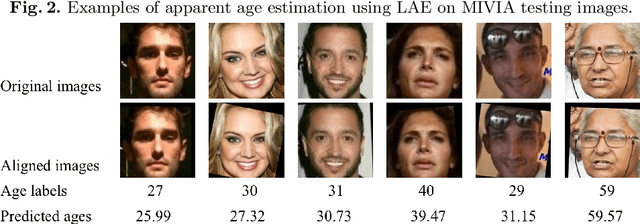Zenghao Bao
HiMix: Reducing Computational Complexity in Large Vision-Language Models
Jan 17, 2025Abstract:Benefiting from recent advancements in large language models and modality alignment techniques, existing Large Vision-Language Models(LVLMs) have achieved prominent performance across a wide range of scenarios. However, the excessive computational complexity limits the widespread use of these models in practical applications. We argue that one main bottleneck in computational complexity is caused by the involvement of redundant vision sequences in model computation. This is inspired by a reassessment of the efficiency of vision and language information transmission in the language decoder of LVLMs. Then, we propose a novel hierarchical vision-language interaction mechanism called Hierarchical Vision injection for Mixture Attention (HiMix). In HiMix, only the language sequence undergoes full forward propagation, while the vision sequence interacts with the language at specific stages within each language decoder layer. It is striking that our approach significantly reduces computational complexity with minimal performance loss. Specifically, HiMix achieves a 10x reduction in the computational cost of the language decoder across multiple LVLM models while maintaining comparable performance. This highlights the advantages of our method, and we hope our research brings new perspectives to the field of vision-language understanding. Project Page: https://xuange923.github.io/HiMix
Manga Generation via Layout-controllable Diffusion
Dec 26, 2024



Abstract:Generating comics through text is widely studied. However, there are few studies on generating multi-panel Manga (Japanese comics) solely based on plain text. Japanese manga contains multiple panels on a single page, with characteristics such as coherence in storytelling, reasonable and diverse page layouts, consistency in characters, and semantic correspondence between panel drawings and panel scripts. Therefore, generating manga poses a significant challenge. This paper presents the manga generation task and constructs the Manga109Story dataset for studying manga generation solely from plain text. Additionally, we propose MangaDiffusion to facilitate the intra-panel and inter-panel information interaction during the manga generation process. The results show that our method particularly ensures the number of panels, reasonable and diverse page layouts. Based on our approach, there is potential to converting a large amount of textual stories into more engaging manga readings, leading to significant application prospects.
General vs. Long-Tailed Age Estimation: An Approach to Kill Two Birds with One Stone
Jul 19, 2023



Abstract:Facial age estimation has received a lot of attention for its diverse application scenarios. Most existing studies treat each sample equally and aim to reduce the average estimation error for the entire dataset, which can be summarized as General Age Estimation. However, due to the long-tailed distribution prevalent in the dataset, treating all samples equally will inevitably bias the model toward the head classes (usually the adult with a majority of samples). Driven by this, some works suggest that each class should be treated equally to improve performance in tail classes (with a minority of samples), which can be summarized as Long-tailed Age Estimation. However, Long-tailed Age Estimation usually faces a performance trade-off, i.e., achieving improvement in tail classes by sacrificing the head classes. In this paper, our goal is to design a unified framework to perform well on both tasks, killing two birds with one stone. To this end, we propose a simple, effective, and flexible training paradigm named GLAE, which is two-fold. Our GLAE provides a surprising improvement on Morph II, reaching the lowest MAE and CMAE of 1.14 and 1.27 years, respectively. Compared to the previous best method, MAE dropped by up to 34%, which is an unprecedented improvement, and for the first time, MAE is close to 1 year old. Extensive experiments on other age benchmark datasets, including CACD, MIVIA, and Chalearn LAP 2015, also indicate that GLAE outperforms the state-of-the-art approaches significantly.
LAE : Long-tailed Age Estimation
Oct 25, 2021



Abstract:Facial age estimation is an important yet very challenging problem in computer vision. To improve the performance of facial age estimation, we first formulate a simple standard baseline and build a much strong one by collecting the tricks in pre-training, data augmentation, model architecture, and so on. Compared with the standard baseline, the proposed one significantly decreases the estimation errors. Moreover, long-tailed recognition has been an important topic in facial age datasets, where the samples often lack on the elderly and children. To train a balanced age estimator, we propose a two-stage training method named Long-tailed Age Estimation (LAE), which decouples the learning procedure into representation learning and classification. The effectiveness of our approach has been demonstrated on the dataset provided by organizers of Guess The Age Contest 2021.
 Add to Chrome
Add to Chrome Add to Firefox
Add to Firefox Add to Edge
Add to Edge